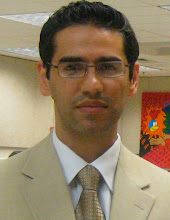Students Wanted Reforms to Surpass Factional Fighting
Hassan Zarezade Ardeshir - 2007.07.10
http://www.roozonline.com/english/archives/2007/07/005915.php
We have spoken to 3 student activists on the eight anniversary of the 18 Tir student uprising: Ali Afshari, Kianoush Sanjari, and Mohammad Masoud Salamati.
Ali Afshari, a former central committee member of Daftar-e Tahkim Vahdat [“Office for Consolidating Unity”], says, “The violent attack on universities was not just a response to student protests against Salam daily’s shut down, but it was also an organized operation to demoralize students, take their fight to the streets, put the reform government under pressure, and crush the student movement.”
Student activist and member of the Jebhe Mottahed Daneshjooye [“United Student Front”], Mohammad Masoud Salamati says, “The reality is that the regime was taken off guard in the 1997 presidential election. While there were rumors that the supreme leader favors one candidate, the opposing candidate received an absolute majority of the votes. This had a clear message. The regime understood this message and was extremely frightened by the growth of this movement…. During 18 Tir they wanted to shut down the motor behind the student movement. The brutal violence that the regime demonstrated in 18 Tir can only be explained as such.”
Another student and human rights activist, Kianoush Sanjari believes, “You have to understand that the serial murders took place one year before 18 Tir. The people behind those political assassinations viewed the student movement as a potential threat to regime’s survival. In their view, student groups and organizations defended secularism, and were attempting to link up with opposition groups inside Iran. Some contacts had actually taken place. Following Khatami’s victory in 1997, students became more radical, with some openly calling for a referendum.”
Ali Afshari analyzes the attack on universities: “Power-grabbers and un-elected institutions focused on crushing the student movement, so that they can rid themselves of one of the two wings that played a crucial role in the emergence and evolution of the reform movement.”
Afshari adds, “The other reason goes back to the historic battle between universities and the power structure over democracy, liberty and freedom. The regime was frightened after the student movement gained momentum in mid-1990s The scope of student activities had surpassed the regime’s tolerance.”
Kianoush Sanjari says, “After a period of silence and immobility, the student movement was born again on 18 Tir. The relationship of student activists and the power structure also changed on that day. Student groups which were previously more influenced by political factions reduced their dependence. Slowly, students realized that instead of asking for power, they should criticize power.”
سهشنبه، تیر ۱۹، ۱۳۸۶
اشتراک در:
پستها (Atom)



